Last updated: March 25, 2025
Article
Finding Moses Cleaveland Trees in Cuyahoga Valley
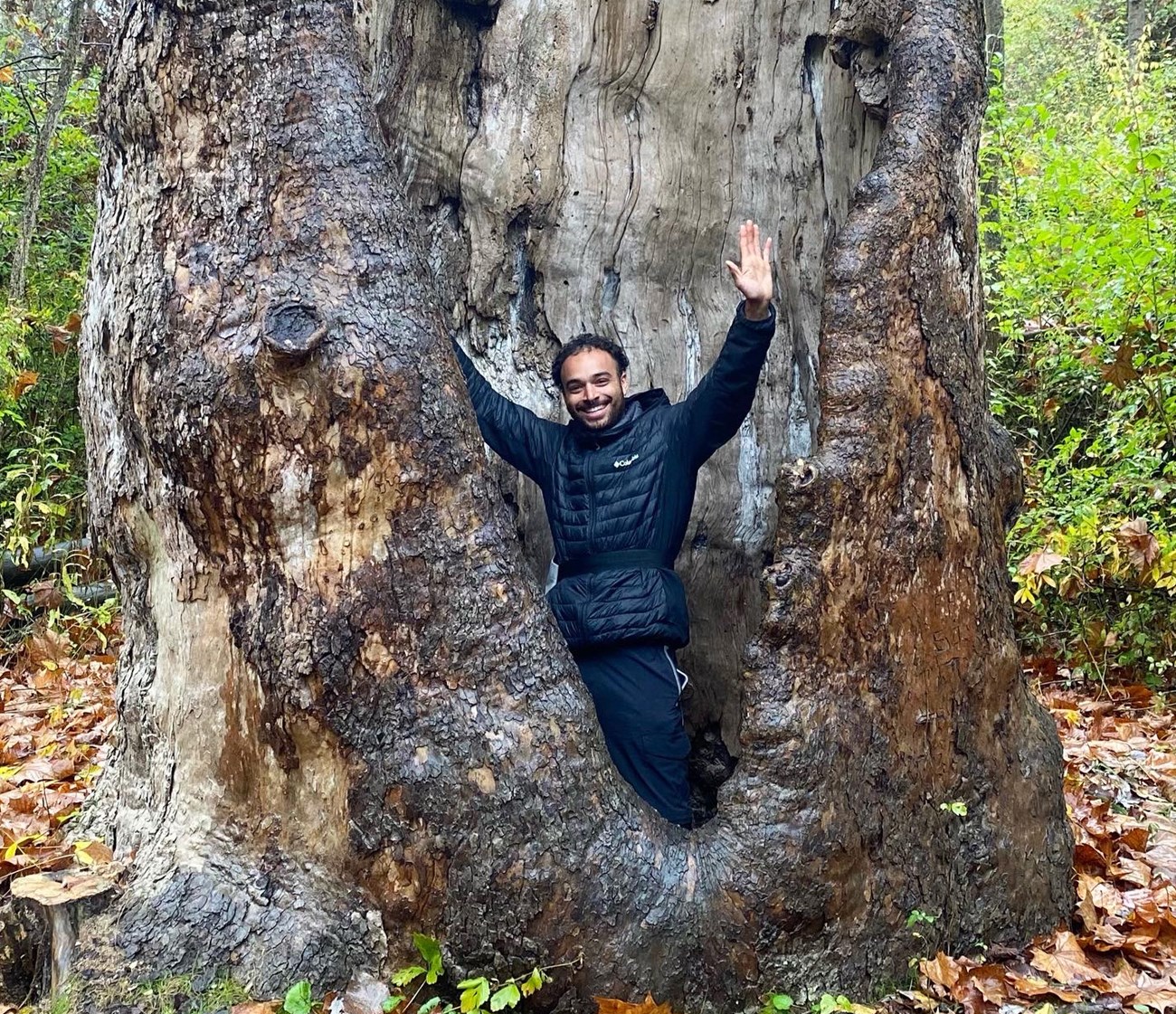
NPS / Shane Henderson
The City of Cleveland commemorates its anniversary on July 22. On this day in 1796, a survey party led by Moses Cleaveland arrived at the mouth of the Cuyahoga River. On behalf of the Connecticut Land Company, they plotted the new “capital” of the Western Reserve here, complete with a New England-style public square. For the 225th anniversary in 2021, a past tradition has been revived. This led the national park on an unusual research mission to find two of the oldest trees in Cuyahoga Valley. With the help of a determined volunteer, we succeeded.
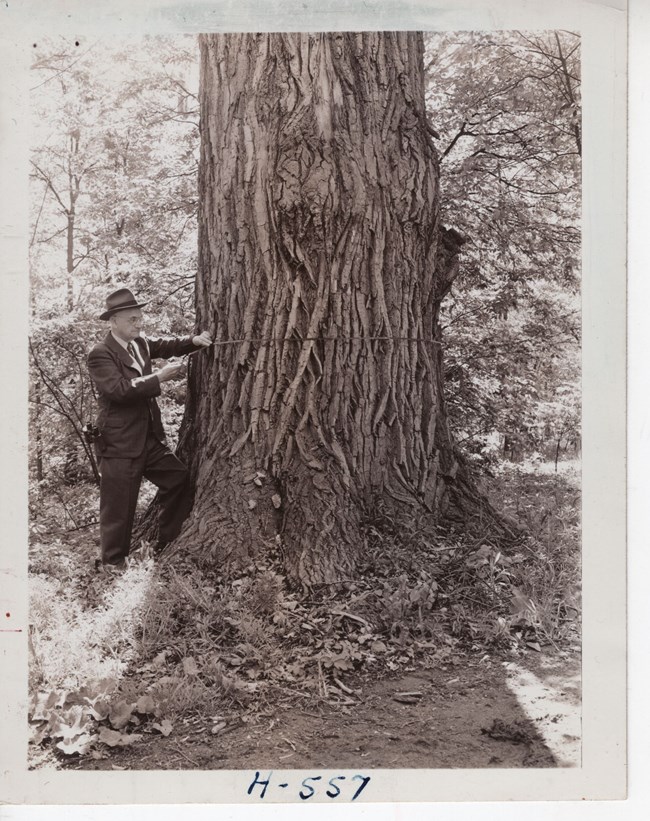
Cleveland Museum of Natural History
Designating the Moses Cleaveland Trees
Following World War II, Cleveland decided on a novel way to mark its 150th anniversary in 1946. Arthur B. Williams of the Cleveland Museum of Natural History headed a committee to find and label 150 “Moses Cleaveland Trees.” They had to be native to Ohio, at least 150 years old, and growing within Cuyahoga County. Since these trees were alive during the famous landing, they would be preserved as living memorials to the first Western Reserve settlers. This quickly became an early example of citizen science. Williams inspected and measured each of the 242 nominations to certify its age. The committee whittled the list down to 150 by prioritizing trees which could be easily seen by the public. The Moses Cleaveland Trees were ceremoniously marked with prominent metal labels. The original group included 23 species with varying lifespans. Over time, some died. From 1971 to 1986, the Early Settlers Association of the Western Reserve added 110 trees to the official list.
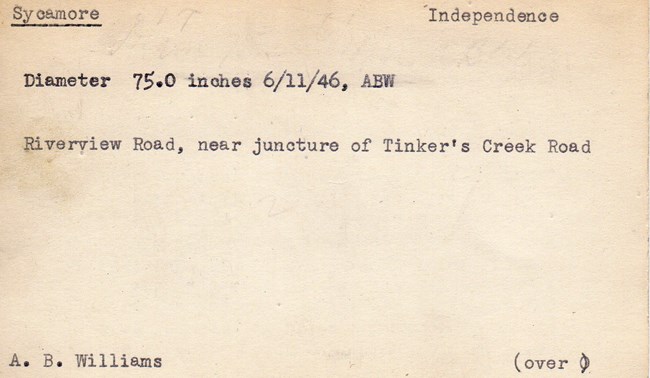
Cleveland Museum of Natural History
A New Inventory
The Eastern Settlers Association has resurrected the Moses Cleaveland Tree Project, in partnership with Sustainable Cleveland’s Forest City Working Group. Their mission is to preserve and showcase this aspect of Cleveland history in time for the city’s bicenquasquigenary in 2021. The team is focused on inventorying all 260 Moses Cleaveland Tree sites, photographing them for historical preservation, and creating an online map displaying their specific locations. Prior to this effort, no single map had been generated for the trees, making it a challenge to find them.
Volunteer Becky MacKay was first introduced to the story of the Moses Cleaveland trees by an interpretive sign in Cleveland Metroparks’ North Chagrin Reservation. On her own, she started researching the 1946 records of A. B. Williams in the hopes of locating a few. Collaborating with resource management staff, she looked for the two on land now owned by the national park. Success! MacKay described this experience as “finding a lost treasure.” When the current project came along, she contributed her work.
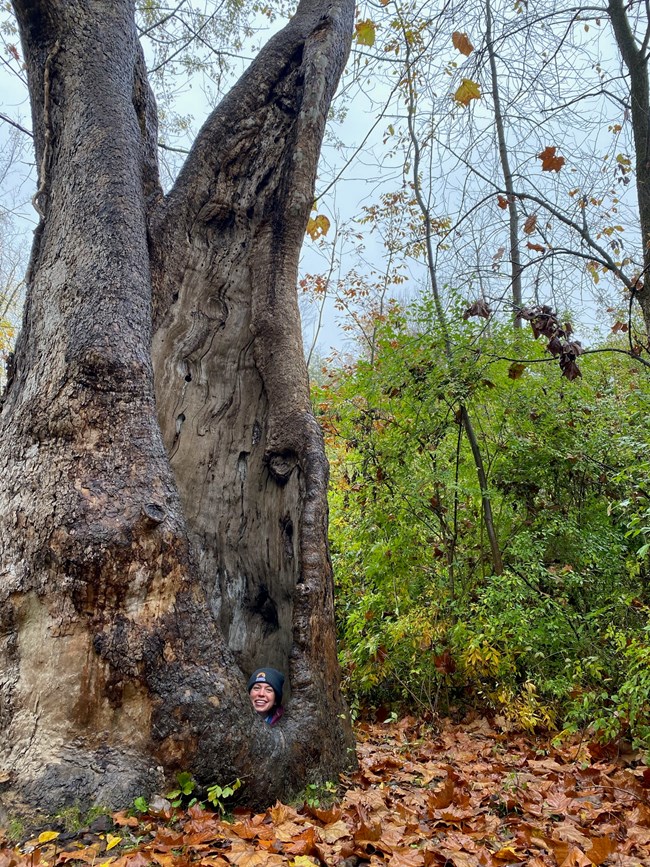
NPS / Shane Henderson
The Last One in Cuyahoga Valley
One Moses Cleaveland Tree still stands in Cuyahoga Valley National Park, located near the Riverview Road extension in Independence. It is an impressive American sycamore that is estimated to be 350-400 years old. Like many old sycamores, it has become hollow due to heart rot. Nevertheless, the tree is still alive with dense leafing and new branches sprouting from the trunk. In 2019 our team measured the diameter at breast height (DBH) to be 82 inches.
This ancient sycamore has had many nicknames over the years, some that stem from documented stories and others from oral traditions. It is said that the tree served as a meeting site, shelter, and resting place for American Indians at various times. As a result, it has been called the Peace Tree, Pilgrim’s Sycamore, Pilgerruh Tree, and Council Tree.
Sycamores were important to American Indians because they indicated the presence of drinking water. Numerous natural springs were located near the Peace Tree. The tree is reported to have been a marker for the Muskingum Trail. A section followed present-day State Route 21 through Richfield, Brecksville, and Independence. The tree was also near the Cuyahoga River and the Sagamore Path (which branched off the Mahoning Trail, a major route connecting Fort Pitt and Fort Detroit).
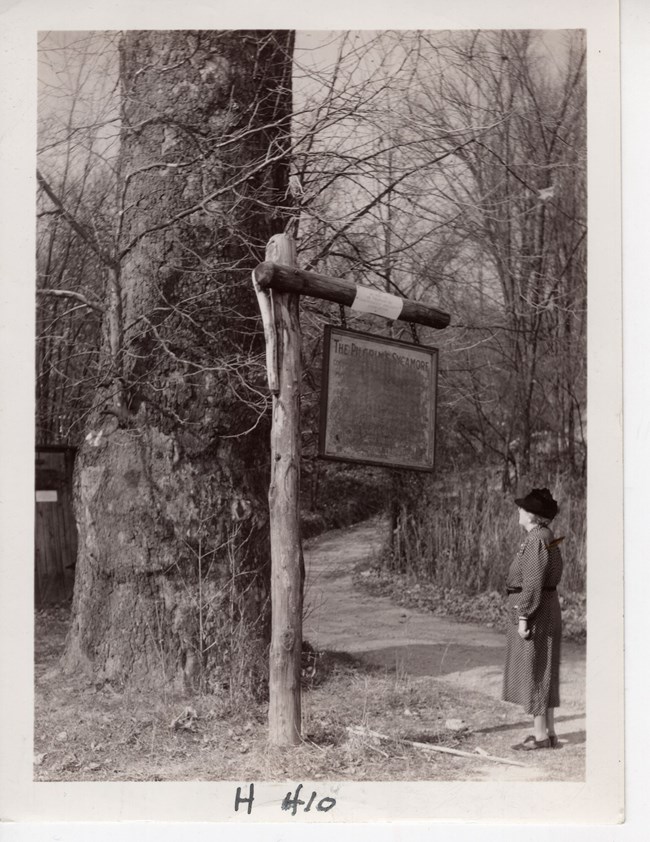
Cleveland Museum of Natural History
Oral tradition reported by a former land owner says that “… this tree sheltered Moravian Missionaries, while in council, after disembarking from canoes on nearby Cuyahoga River.” Is this referring to when the group asked the Ottawa for permission to use a former village site? In 1786-87, these Germans and 95 Christian Lenape built a temporary home in the Cuyahoga Valley that was later called Pilgerruh.
In 1946, Williams wrote on the sycamore’s record: “A few years ago the top was blown off with a charge of dynamite because the trunk was so unsteady that it was feared that it might topple over on the roadway and cause damage or perhaps personal injury. The remaining stump is nothing more than a shell, but there is great vitality apparently still in the old tree, and a great many small twigs have grown out from the shell.” This earned another local nickname, the Die-Hard Tree.
Twelve Were Lost
A swamp white oak along Tinkers Creek Road was also designated as a Moses Cleaveland Tree in 1946. Unfortunately, it blew down in a 2019 windstorm. A stump is all that remains. There used to be 11 Moses Cleveland trees in the Brecksville Reservation. These either succumbed to old age or storms, or have not been located.
Learn More
Volunteer Becky MacKay and Biologist Ryan Trimbath did extensive research to document the last remaining Moses Cleaveland Tree in Cuyahoga Valley. We invite you to read their full report and to explore the interactive map marking all these giants. The Forest City Working Group is considering how a new generation of landmark trees might carry this legacy into the future. What species should be picked, given climate change predictions? Are single trees the best choice given new research on the social lives of trees? What about designating new groves? What does planting or protecting a tree mean to you?
